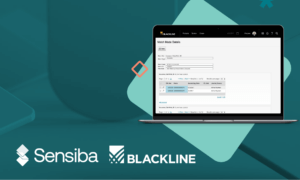In a world where interest rates, employment numbers, and financial markets seem to all be moving in different directions, it could almost be comforting that the universe of artificial intelligence (AI) applications in business is expanding exponentially in a single direction.
In this series of posts, we’re going to look at what we’re currently excited about in AI and machine learning (ML) applications in the accounting world, speculate about what we see on the horizon through 2023, and consider implications for the accounting profession and, by extension, the larger business environment.
The Impact of AI in the Accounting World
In the roughly six months since ChatGPT was publicly released by OpenAI, the world seems to have been consumed with AI possibilities and threats. Understandably, the abilities of ChatGPT and related technologies to replicate human writing, art, and music are shocking in their potential, in both positive and negative ways.
However, ChatGPT (Generative Pre-trained Transformer) is only one of many AI technologies that are finding their way into our working lives.
AI in Cloud-Native Applications
If your organization is conducting business using cloud-native applications, there’s a very good chance that AI is already behind some of the processes you’re using every day. For example, thousands of small- and mid-sized businesses and not-for-profits use BILL (formerly Bill.com) to manage payables and pay their vendors.
Since 2019, BILL has included AI processes under the hood; first to read, extract, and code data from a bill image, and later, to separate multi-page invoice bundles into separate bills. Now BILL is able to identify and highlight likely duplicate bills from a vendor, potentially saving both cash and headaches by preventing inadvertent extra payments.
This subtle but valuable kind of AI functionality is becoming table stakes in accounts payable automation. AI-assisted invoice extraction and coding, as well as duplicate detection, are also included in Sage Intacct Accounts Payable. Enterprise-level automation app Tipalti brands its AI as “PI” for Payables Intelligence. Their tool can not only do invoice and line-level coding, but also learn and suggest approval workflows for different kinds of invoices.
Expanding AI Automation in Accounting and Business Tasks
Accounts Payable
Accounts payable processes are low-hanging fruit for AI automation because they typically require lots of human effort, yet are mostly routine and predictable. Human judgment is only needed intermittently and, if applied properly, AI can route these exceptions to humans more efficiently, making AI a great team player. As AI technologies become more accessible, we’re seeing this model expand across more accounting and business tasks.
For example, another piece of drudgery many of us in professional services dread is time reporting. Although we might have widgets available in our computer that track time for client projects, the reality is that most of us must figure out at the end of a day, or a week, how we probably spent our time.
We do that by researching our recent history and by looking at our calendars, our emails, and maybe the files or tabs we’ve had open recently. Then we dubiously fill out a timesheet and send it for approval.
Time Reporting
Since nobody enjoys this, time reporting is a great application for AI and ML. Given permissions by the user, Sage Intelligent Time will perform this mundane task and propose a timesheet in seconds, based on the real inputs from the user’s calendar, email, browser, and file access. Then the user adjusts this proposed time according to their judgment and submits it for approval.
Those user adjustments are then rolled back into the ML engine to improve its work the next time around. Sage Intelligent Time was introduced in late 2020 and can now be enabled for customers subscribed to Sage Intacct Project Costing or Sage Intacct Grants and Projects.
Looking Ahead
In our next AI post, we’ll take a look at ChatGPT and other AI technologies in accounting and related industries and ask how we might expect to benefit from these exciting innovations in the coming 6-12 months.
If you have questions about how to enable or use the AI and ML capabilities in Sage Intacct or other products, don’t hesitate to reach out to us.

















